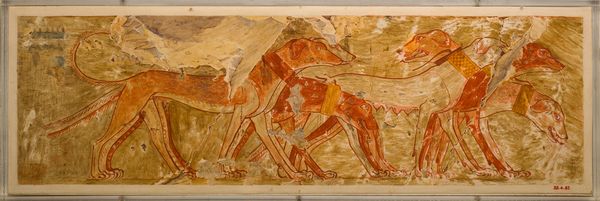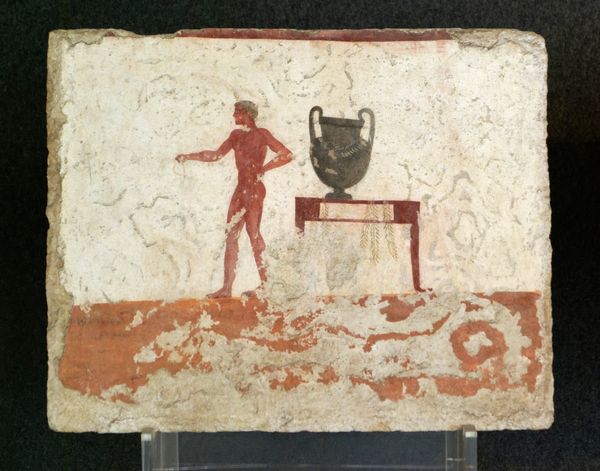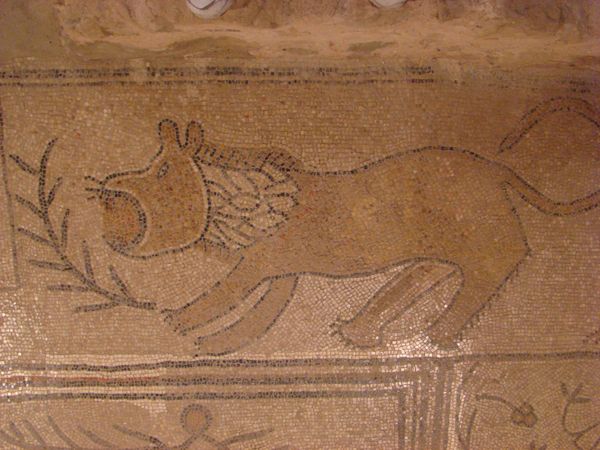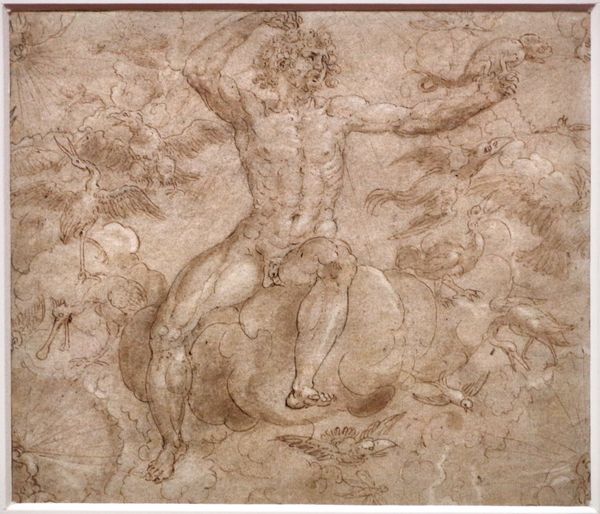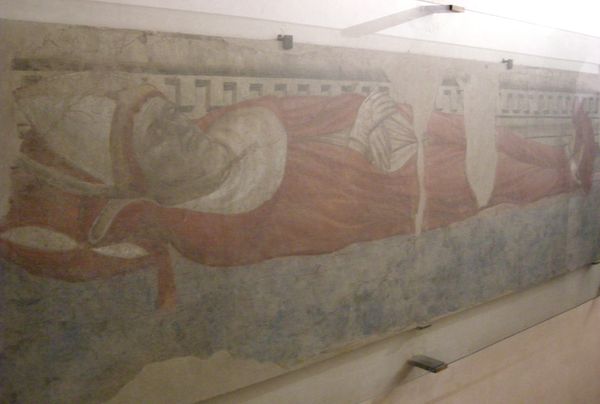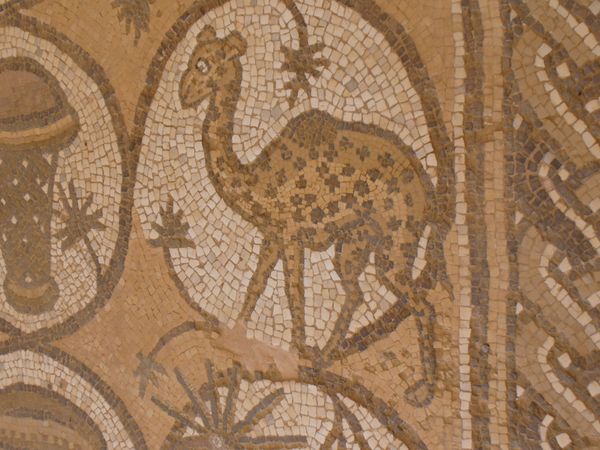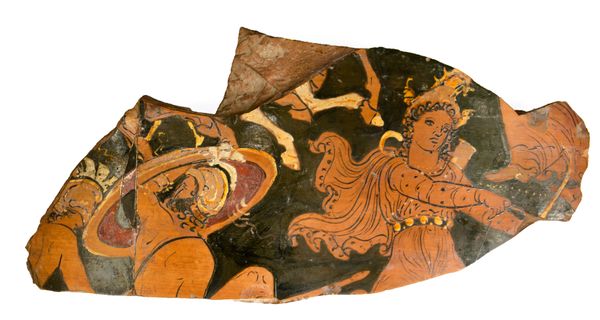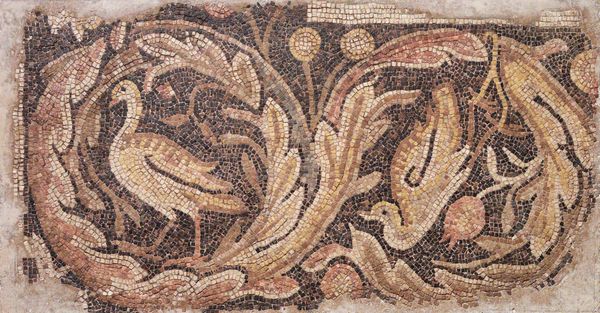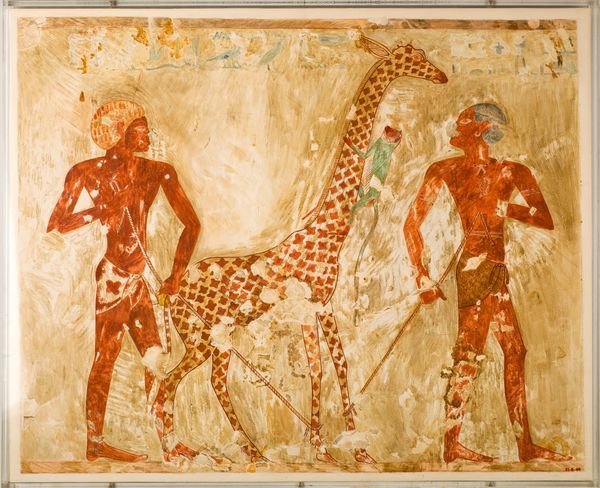
mosaic, architecture
#
mosaic
#
greek-and-roman-art
#
figuration
#
ancient-mediterranean
#
genre-painting
#
architecture
Dimensions: 41 1/4 x 81 1/2 in. (104.78 x 207.01 cm)
Copyright: Public Domain
This mosaic, titled "Elephant Attacking a Feline," is of unknown origin, but it is an artwork made from the assembly of small fragments of stone or glass. The mosaic's material and method of creation are crucial to understanding its significance. Each tessera, or individual tile, was carefully placed to form the overall image. This was an incredibly labor-intensive process, reflecting the vast amount of human effort required. The elephant and feline subject matter are depicted through a dense, almost pixelated structure, where the inherent qualities of the stone—its texture, weight, and color—influence the final form. Mosaics like this are not merely decorative; they speak to a culture’s values and priorities. The work involved in the production process is immense, connecting to broader social issues of labor and class. As you consider "Elephant Attacking a Feline," remember that the real story lies in the materials, the making, and the cultural context, blurring the lines between craft and fine art.
Comments
minneapolisinstituteofart about 2 years ago
⋮
Animal combat is a Near Eastern theme which entered early into Greek and later Roman art. The introduction of large-scale animal compositions was an important innovation in mosaic decoration, possibly stimulated by circus spectacles. In the fourth century A.D. pavement mosaics of hunting scenes were installed in the villa of Constantine the Great in Antioch, setting an important local precedent. In this fragment of a larger scene, the elephant appears to be somersaulting the tiger with his trunk. The two animals are flattened and generalized into a linear surface pattern, with little attempt at anatomical accuracy. The Romans associated the African elephant with military victory, while tradition held that the tiger, a native of Asia, gave his name to theTigris river. Although this mosaic formed part of a pavement in an Early Christian church, any eventual religious significance of the animals remains obscure, and may not have been intended.
Join the conversation
Join millions of artists and users on Artera today and experience the ultimate creative platform.
